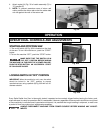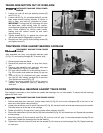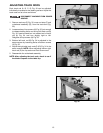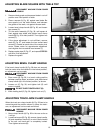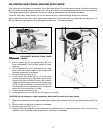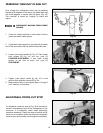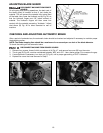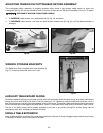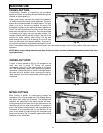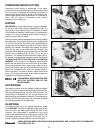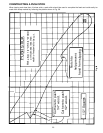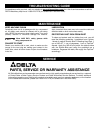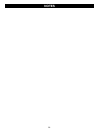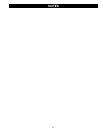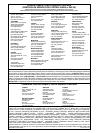
22
COMPOUND MITER CUTTING
Compound miter cutting is performed in the same
manner as miter cutting except the saw blade is also tilted
to cut a bevel. The settings and operation are similar to
miter cutting except that the blade is first tilted to the
desired angle on the bevel scale before it is clamped in
place. Fig. 55 shows a compound miter cutting
operation on the radial saw.
RIPPING
IMPORTANT: In certain applications, it may be necessary
to use two push sticks, and/or featherboards. Also, if a
push stick or other feeding device is necessary to assist
in the feeding of material, make certain it is conveniently
located so it may be reached easily without having to
stretch or reach near the blade.
Ripping involves making a lengthwise cut through a board
along the grain. When ripping, the track arm is clamped at
“0” on the miter scale. The yoke is then positioned and
clamped so that the blade is parallel to the fence. When
feeding the material, one edge rides against the fence
while the flat side of the board rests on the table. The
guard should be lowered on the in-feed side until it almost
touches the workpiece (Figs. 56 and 57), to act as a
holddown. The splitter and anti-kickback fingers (A) Fig.
56 should be adjusted as described under the section
“ADJUSTING SPLITTER AND ANTI-KICKBACK
FINGERS” in this manual. The operators hands should
always be well away from and to the side of the blade.
When ripping narrow work, always use a push stick as
shown in Fig. 58 to push the work between the fence and
blade. The workpiece must have one straight edge to
follow the fence. If board is bowed, place hollow side
down. The cutting-head clamp knob should be securely
tightened for all ripping operations.
THE MATERIAL MUST NEVER BE FED
INTO THE OUTFEED END OF THE
BLADE GUARD.
OUT-RIPPING
Out-ripping involves all of the general conditions stated
above. The yoke is clamped at right angle to the track arm
with the blade guard facing the front of the machine. The
cutting-head is positioned on the out-rip scale to the
desired setting and clamped in position. The workpiece is
fed from the left side of the saw. Fig. 56 shows a typical
out-ripping operation on the radial saw.
IN-RIPPING
In-ripping involves all of the general conditions stated
under RIPPING. The yoke is clamped at right angle to the
track arm with the blade guard facing the rear of the
machine. The cutting-head is positioned on the in-rip
scale to the desired setting and clamped in position. The
workpiece is fed from the right side of the saw. Fig. 57
shows a typical in-ripping operation on the radial saw.
WHEN RIPPING WORK LESS THAN FOUR INCHES WIDE, USE A PUSH STICK TO COMPLETE
THE FEED. (FIG. 58)
Fig. 55
Fig. 56
Fig. 57
A
B



